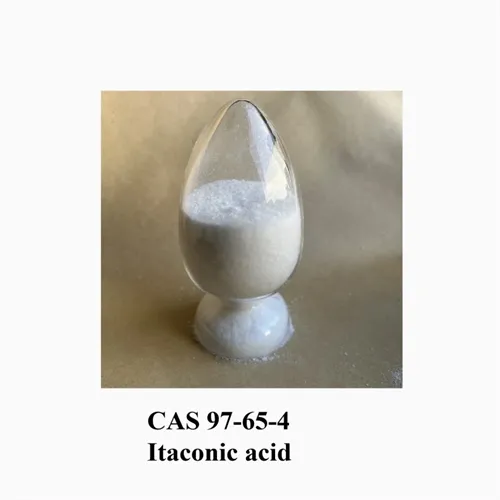Warning: Undefined array key "title" in /home/www/wwwroot/HTML/www.exportstart.com/wp-content/themes/1198/header.php on line 6
Warning: Undefined array key "file" in /home/www/wwwroot/HTML/www.exportstart.com/wp-content/themes/1198/header.php on line 7
Warning: Undefined array key "title" in /home/www/wwwroot/HTML/www.exportstart.com/wp-content/themes/1198/header.php on line 7
Warning: Undefined array key "title" in /home/www/wwwroot/HTML/www.exportstart.com/wp-content/themes/1198/header.php on line 7
- Afrikaans
- Albanian
- Amharic
- Arabic
- Armenian
- Azerbaijani
- Basque
- Belarusian
- Bengali
- Bosnian
- Bulgarian
- Catalan
- Cebuano
- China
- China (Taiwan)
- Corsican
- Croatian
- Czech
- Danish
- Dutch
- English
- Esperanto
- Estonian
- Finnish
- French
- Frisian
- Galician
- Georgian
- German
- Greek
- Gujarati
- Haitian Creole
- hausa
- hawaiian
- Hebrew
- Hindi
- Miao
- Hungarian
- Icelandic
- igbo
- Indonesian
- irish
- Italian
- Japanese
- Javanese
- Kannada
- kazakh
- Khmer
- Rwandese
- Korean
- Kurdish
- Kyrgyz
- Lao
- Latin
- Latvian
- Lithuanian
- Luxembourgish
- Macedonian
- Malgashi
- Malay
- Malayalam
- Maltese
- Maori
- Marathi
- Mongolian
- Myanmar
- Nepali
- Norwegian
- Norwegian
- Occitan
- Pashto
- Persian
- Polish
- Portuguese
- Punjabi
- Romanian
- Russian
- Samoan
- Scottish Gaelic
- Serbian
- Sesotho
- Shona
- Sindhi
- Sinhala
- Slovak
- Slovenian
- Somali
- Spanish
- Sundanese
- Swahili
- Swedish
- Tagalog
- Tajik
- Tamil
- Tatar
- Telugu
- Thai
- Turkish
- Turkmen
- Ukrainian
- Urdu
- Uighur
- Uzbek
- Vietnamese
- Welsh
- Bantu
- Yiddish
- Yoruba
- Zulu
ಸೆಪ್ಟೆಂ . 23, 2024 10:50 Back to list
Is Sucralose a Better Alternative to Aspartame for Sweetening Foods?
Sucralose vs. Aspartame A Comprehensive Comparison
In the realm of artificial sweeteners, two names often surface sucralose and aspartame. Both are widely used sugar substitutes, but they belong to different chemical families and possess distinctive properties that can affect consumer choice. This article aims to provide a detailed comparison of sucralose and aspartame, exploring their chemical structures, uses, safety profiles, and public perception.
Chemical Structure and Composition
Sucralose is derived from sugar (sucrose) through a process that involves chlorination, replacing three hydroxyl groups with chlorine atoms. This alteration renders it about 600 times sweeter than sucrose, allowing for its use in minuscule amounts. Sucralose is heat-stable, which makes it suitable for baking and cooking without losing its sweetness.
Aspartame, on the other hand, is a low-calorie sweetener created from the amino acids aspartic acid and phenylalanine. It is known for being approximately 200 times sweeter than sugar. Unlike sucralose, aspartame is not heat-stable, which limits its use in products that require prolonged cooking or baking.
Uses in Food Products
Both sucralose and aspartame are prevalent in a variety of food products. Sucralose is commonly found in beverages, baked goods, and dairy products, making it a favorite among food manufacturers because of its versatility. Aspartame is frequently used in diet sodas, sugar-free gum, and various low-calorie desserts.
The choice between sucralose and aspartame often depends on the product and the desired characteristics. For instance, sucralose is preferred for products that require heat exposure, whereas aspartame is more appropriate for items consumed without cooking.
sucralose is it aspartame

Safety and Health Concerns
Safety is a paramount consideration for artificial sweeteners, and both sucralose and aspartame have undergone rigorous testing by health authorities around the world. The U.S. Food and Drug Administration (FDA) approved sucralose in 1998, deeming it safe for human consumption. Likewise, aspartame, approved by the FDA in 1981, has been subjected to extensive research.
However, aspartame has faced scrutiny due to its phenylalanine content, which can be harmful to individuals with phenylketonuria (PKU), a rare genetic disorder. The FDA requires products containing aspartame to carry a warning label for those who are sensitive to this amino acid. In contrast, sucralose does not pose this risk, making it a more universal choice for consumers.
Public Perception and Consumer Choices
Consumer opinions on artificial sweeteners vary significantly, often shaped by personal experiences, health concerns, and media reports. Sucralose has generally been viewed more favorably, as many people perceive it as a more natural alternative due to its sugar origin. On the other hand, aspartame has been the subject of numerous controversies, with some studies railing against its safety and linking it to various health issues, although regulatory agencies assert its safety based on available evidence.
Many consumers are now leaning towards products with no artificial sweeteners, driven by a growing health-conscious trend. However, sucralose and aspartame continue to play significant roles in sugar reduction strategies for individuals seeking to manage weight or blood sugar levels.
Conclusion
In conclusion, both sucralose and aspartame are effective artificial sweeteners, each with its unique set of characteristics. Sucralose offers heat stability and a broader range of applications, while aspartame's amino acid composition provides a sweet taste but with certain limitations and health considerations. Ultimately, the choice between the two depends on individual preferences, dietary needs, and attitudes towards artificial ingredients. As the conversation around artificial sweeteners continues to evolve, staying informed will empower consumers to make choices that align with their health goals and lifestyles.
Latest news
-
Certifications for Vegetarian and Xanthan Gum Vegetarian
NewsJun.17,2025
-
Sustainability Trends Reshaping the SLES N70 Market
NewsJun.17,2025
-
Propylene Glycol Use in Vaccines: Balancing Function and Perception
NewsJun.17,2025
-
Petroleum Jelly in Skincare: Balancing Benefits and Backlash
NewsJun.17,2025
-
Energy Price Volatility and Ripple Effect on Caprolactam Markets
NewsJun.17,2025
-
Spectroscopic Techniques for Adipic Acid Molecular Weight
NewsJun.17,2025

